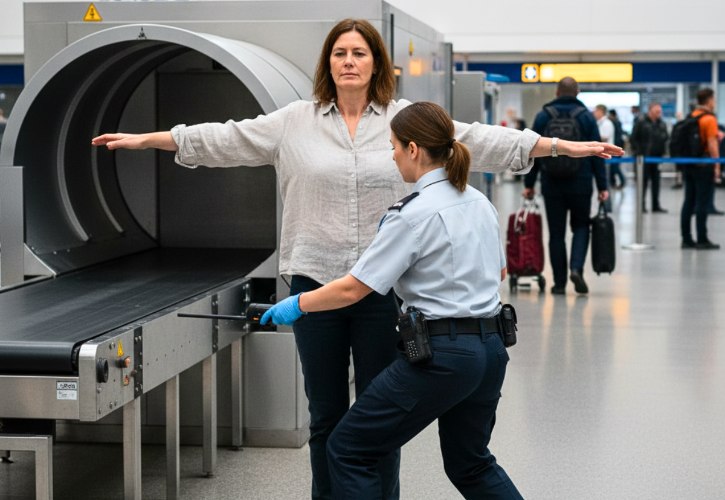
Getting through airport security is stressful. Don’t make it worse with the wrong outfit.
Your clothing choices can turn a quick screening into a long wait.
Certain items trigger extra scans, pat-downs, and delays. Choose your travel outfit wisely to get through security fast.
Here are 10 things to avoid wearing at the checkpoint. I hope these tips help make your next trip smoother. 😊
1. Clothes with Sequins or Metallic Threads

Sparkly fabrics may look fun, but they create problems at airport security.
Sequins, metallic threads, beads, and pearls can confuse scanning equipment.
These shiny or reflective elements often appear as suspicious shapes on screens and trigger manual inspections.
Common troublesome items include sequined tops, glittery dresses, sweaters woven with metallic thread, and jeans decorated with pearls.
Many travelers report being stopped for additional scans or having security officers pat down areas where sparkles appear on the scanner.
Smart Solutions:
- Choose simple fabrics like cotton, jersey, or polyester for travel days
- Pack your sparkly outfit in your carry-on and change after clearing security
2. Hoodies or Sweaters Tied at the Waist

It may feel convenient to tie a hoodie or sweater around your waist, but it creates a big problem for scanners.
A bulky knot appears as an unidentifiable mass that scanning machines cannot properly read.
Security officers will almost always require you to remove the tied clothing and send it through the X-ray separately.
The real inconvenience occurs when you’re already standing in the security line.
Untying clothing while juggling bags and personal items becomes awkward and holds up other passengers.
Additionally, these knots can be mistaken for concealed objects, potentially leading to a pat-down inspection.
Better Alternatives:
- Wear your hoodie or sweater normally
- Drape it over your arm while going through security
- Fold it neatly into your carry-on bag before reaching the checkpoint
3. Belts with Large Buckles or Heavy Jewelry

Belts with big metal buckles are almost guaranteed to trigger security alarms.
When you wear one, be prepared to remove it completely before proceeding through the scanner.
Large watches, chunky bangles, and statement necklaces create the same scanning issues.
These metal accessories not only slow down your screening process but also require you to juggle multiple items while moving through security.
The removal and replacement process becomes particularly cumbersome when you’re managing bags and other personal belongings.
Smart Alternatives:
- Pack belts and jewelry in a small pouch inside your carry-on before reaching the security line
- Choose belts with fabric or plastic clasps instead of metal buckles
- Wear minimal jewelry on travel days to streamline the process
4. Shoes and Boots That Are Hard to Remove
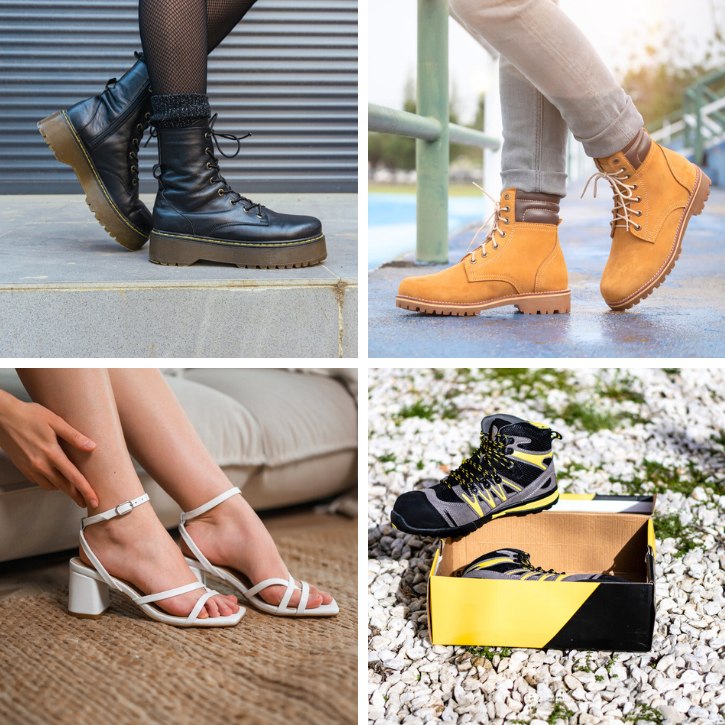
While shoes may seem like a minor detail, they can create significant delays at airport security checkpoints.
Lace-up boots, pull-on boots, strappy heels, and steel-toe shoes all require extra time to remove.
This becomes problematic since many airports still require passengers to take off their shoes during screening.
Beyond the time factor, there’s also a safety concern. Balancing on one foot while trying to remove tight-fitting boots can be risky, particularly when seating near security lines is limited.
Quick Tips for Smoother Screening:
- Loosen laces or unbuckle shoes before reaching the scanner
- Choose slip-on shoes, loafers, elastic sneakers, or comfortable trainers instead
- Always wear socks since airport floors are both cold and unsanitary, making socks essential for comfort and hygiene
5. Pockets Full of Items or Hidden Money Belts
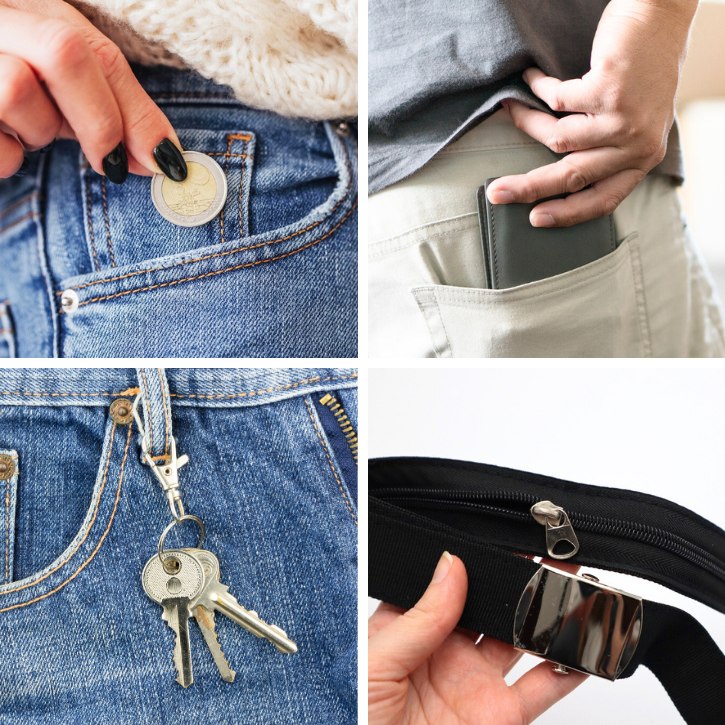
It’s easy to forget about what’s in your pockets, but even tiny items can cause screening problems.
Coins, tissues, wallets, and keys all appear as unidentifiable shapes on security scanners.
Walking through with full pockets will almost always result in additional screening.
Hidden items create even bigger issues at checkpoints. Money belts, neck wallets, and pouches strapped under your clothing are particularly problematic.
Security scanners detect these accessories as solid masses on your body and immediately flag them for inspection.
The inspection process for hidden items often requires a private screening room and additional time, significantly delaying your travel.
Best Practices:
- Empty all pockets completely before joining the security line
- Place pocket items in your carry-on bag or a designated zip pouch
- Remove money belts and neck wallets before reaching the scanner
- Keep items organized to speed up the repacking process after screening
6. Metal Hair Accessories or Large Updos

Hair styling choices can create unexpected security complications.
Bobby pins, barrettes, jeweled clips, and metal headbands may seem insignificant, but they cause real problems during screening.
A cluster of metal objects in your hair appears suspicious to scanning equipment.
Security officers may request a closer inspection of your head, which can feel uncomfortable and intrusive.
Large hairstyles present additional challenges at checkpoints.
Buns, dreadlocks, and very high ponytails can confuse scanners by significantly altering your head’s natural shape.
When scanning machines cannot produce a clear image, you may be required to step aside for a manual hair pat-down.
This type of inspection takes extra time and can feel particularly invasive compared to other security procedures.
Hair-Friendly Alternatives:
- Use fabric hair ties or scrunchies instead of metal accessories
- Keep your hair down and loose on travel days
- Choose plastic or fabric headbands over metal ones
- Remove all bobby pins and clips before approaching security
7. Bulky Coats and Jackets
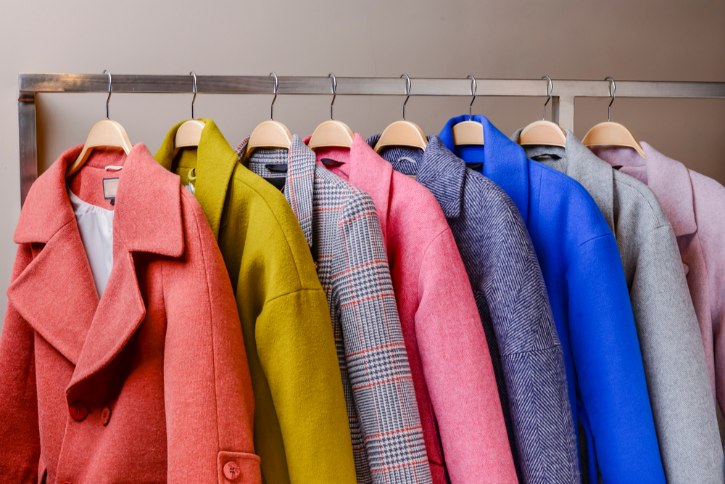
Heavy coats, parkas, and thick jackets must always be removed and scanned separately at security checkpoints.
This requirement slows down the entire screening process and takes up valuable bin space.
Managing your bags while also handling a large, bulky coat creates unnecessary stress and complications in the security line.
The removal process becomes particularly cumbersome when you’re already juggling multiple carry-on items, personal belongings, and electronic devices.
Other passengers behind you may become impatient as you struggle to organize everything efficiently.
Smarter Coat Management:
- Carry your coat over your arm before reaching the security checkpoint
- Pack bulky outerwear into a tote bag or carry-on before joining the line
- Choose lightweight, packable jackets for easier handling
- Opt for thinner layered clothing instead of one heavy coat
8. Long Flowy Dresses That Confuse Scanners

Loose maxi dresses and wide skirts may look stylish, but they confuse scanner.
The flowing fabric creates air pockets and irregular shapes that scanning machines cannot properly interpret.
This scanning confusion often results in mandatory pat-down inspections.
Additionally, baggy clothing raises security concerns about potential concealment.
Officers cannot easily distinguish between natural fabric draping and items that might be hidden underneath loose garments.
The pat-down process requires additional time and involves a more invasive screening procedure, which can be uncomfortable and delay your travel plans.
Better Clothing Choices:
- Wear fitted clothing, pants, or knee-length dresses for travel days
- Temporarily tie or gather loose dresses while walking through the scanner
- Pack flowy gowns in your luggage and change after reaching your destination
- Choose structured fabrics over flowing materials
- Opt for clothing that follows your natural body shape
9. Bulky Layers or Tight Shapewear

Wearing too many layers creates unnecessary complications at security checkpoints.
Thick sweaters layered over shirts and under coats create confusion for scanning equipment.
These excessive layers make it difficult for machines to produce clear body images, which frequently triggers additional screening procedures.
Tight-fitting undergarments present another hidden challenge during security screening.
Shapewear, waist trainers, and corsets can appear as anomalies on body scanners.
When these items are flagged by security systems, you may be required to undergo a pat-down inspection or even adjust or remove the garment in a private screening room.
This type of screening is not only time-consuming but can also be embarrassing and highly inconvenient, especially when you’re rushing to catch a flight.
Layering Strategies for Security:
- Choose light, simple layers that are easy to manage
- Wear minimal undergarments on travel days
- Avoid bulky sweaters and multiple shirt combinations
- Pack extra clothing in your carry-on instead of wearing everything
10. Bras with Metal Underwires
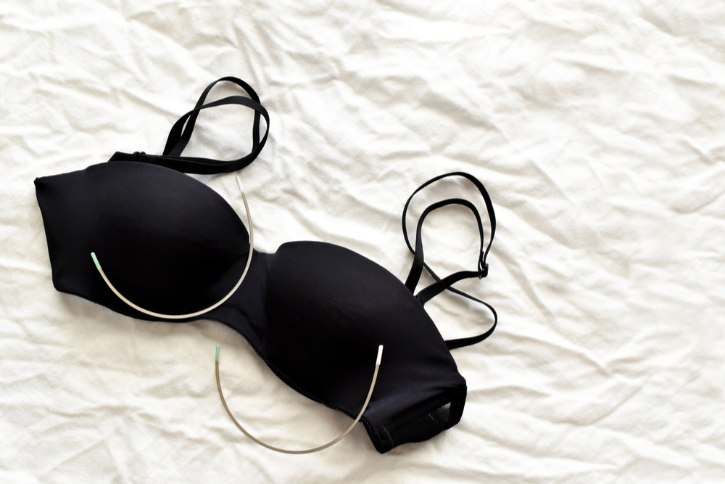
Bras with strong underwires can occasionally trigger security alarms, particularly those with thick or rigid wiring.
When alarms are triggered, security officers will typically perform a pat-down inspection around your chest area.
You always have the right to request that this screening be conducted in a private room for your comfort and privacy.
Not every underwire bra will cause problems, but the potential for additional screening exists.
The chest pat-down process can feel invasive and may cause delays, especially during busy travel periods when private rooms have wait times.
Comfortable Alternatives:
- Choose wireless bras, sports bras, or bralettes for travel days
- These options provide comfort while eliminating any chance of triggering alarms
- Pack your regular underwire bras in your luggage if needed at your destination
- Test different wireless styles before travel to ensure adequate support

